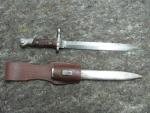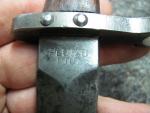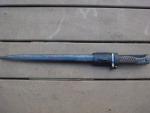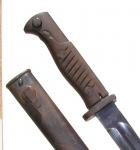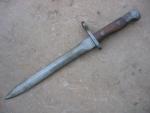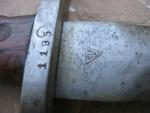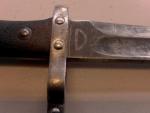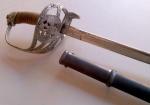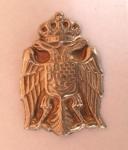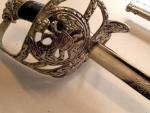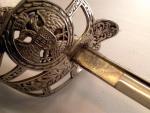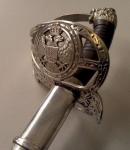-
Posts
41 -
Joined
-
Last visited
Content Type
Profiles
Forums
Blogs
Gallery
Events
Store
Everything posted by chetnik1942
-
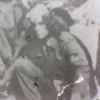
Serbia Serbia - Original Chetnik items
chetnik1942 replied to serbman's topic in Southern European & Balkan States
My opinion is this is fake. It just doesnt look right. -

Serbia Order of the White Eagle with Diamonds
chetnik1942 replied to utopis's topic in Southern European & Balkan States
Cost of the order is a lazy $150,000 (I had to ask the dealer). -

Unidentified Unknown Serbian (or Yugoslav) badge D S ?
chetnik1942 replied to WRANGEL's topic in Southern European & Balkan States
The badge is for post WW2 Serbian organization 'Dusan Silni', named after Emperor Dusan The Mighty. My late father was a member of this organization when established in Italian camps after the war. I'll find some pictures and post. -

Serbia Serbia - Original Chetnik items
chetnik1942 replied to serbman's topic in Southern European & Balkan States
Are you referring to the men wearing the berets? -

Serbia Serbia - Original Chetnik items
chetnik1942 replied to serbman's topic in Southern European & Balkan States
Hi, The first photo of your grandfather, he appears to be wearing an officers cap badge for Kingdom of Yugoslavia. The man to left is wearing a chetnik cap badge (skull & bones), likely from the Dinaric Division from Bosna or Lika. The other photos appear to be taken in camps is Germany after the war. The men wearing the black berets are Serbs who served in the British army after WW2. What I can suggest is to go onto a group on facebook called "I am from a chetnik family". There are many members on there, some that may even be able to identify or give further information on the individuals in the photos. Try this link and see if it works http://www.facebook.com/#!/groups/JaSamIzCetnickeFamilije/ Go through and spend some time looking at the photos and reading articles on there, you may find something useful in tring to identify and find more info on your grandfather. What was his full name? Happy hunting, Regards, Danilo -
Knife bayonet for use with the 7 mm. M1899, M1899/07, and M1910 Mauser rifles. This bayonet was made for Serbia by Plumb in 1915. The bayonets were marked with "Plumb" and the year of manufacture on the ricasso. However, additional bayonets were made in 1915 by Plumb for commercial sale, using the leftover parts from the Serbian contract. The absence of any markings identifies this example as probably a contract overrun piece that Plumb made for commercial sale. The Serbian M1899 bayonet is one of the few double-edged Mauser bayonets. The grips are secured by high-domed rivets, with washers. The crosspiece is also secured by high-domed rivets. The M1899 bayonet was also made by Simpson & Co. of Suhl, Germany in 1899–1906, Oesterreichsche Waffenfabrik-Gesellschaft, Steyr, Austria from 1907 to 1910 and some by the Vojno Tehnicki Zavod (BT3) in Kragujevac, Serbia.
-
Mauser 1924B sword bayonet for use with the 8 mm Puska 98 rifle. The Puska 98 was a German Gewehr 98, modified to approximate the FN M1924 Short Rifle. This bayonet was originally made as a German M1898/05 bayonet by C.G. Haenel in 1917. The original German markings are still visible. From 1939–1941, the Uzice Factory, in Yugoslavia, converted captured World War 1 German Gewehr rifles and M1898/05 bayonets to conform to the M1924 specification. Approximately 20,000 rifles and bayonets are believed to have been converted before the Nazis overran Yugoslavia in 1941. The bayonet's blade was reground to the M1924 blade profile, so that the M1924 scabbard would accept it. This was key to making the bayonet useful, as the Yugoslavian belt frog would not accept the wide 98/05 scabbard. Some examples retain the original German grip scales, while others (like this one) have crude replacements with the diagonal serrations running in the opposite direction. The muzzle ring is still intact unlike other examples where it has been removed all together. The bayonet is stamped M1924B. This seemed like a difficult process to undertake. May have been easier to just make a new one? Either way, another example of a rare Yugoslavian converted bayonet. Photo with muzzle ring removed (not in my collection)
-

Kingdom of Yugoslavia cap badge?
chetnik1942 replied to Matt R's topic in Southern European & Balkan States
Hi Lightfoot, the picture you attached is a different model of the NCO cap badge. It can be seen by how close the eagles beak is to the wing tip (I have the same badge). The book "Oznake jugoslovenske vojske u otazbini" by Branko Jeftic is an excellent reference for the topic. -

Serbia Serbia - Original Chetnik items
chetnik1942 replied to serbman's topic in Southern European & Balkan States
That I am not exactly sure of. The badge was left to my father by one of the old Chetniks before they passed away. My father was a young Chetnik at 16 at the start of the war. When he migrated to Australia, he was a lot younger then many of the others. My father was a leader in the Serbian community in Adelaide and was the president of the Serbian Cutural Club, as well as a historian (growing up my house was like a museum). Many of the older Chetniks passed away long before I was born (my father was 56 years old when I was born in 1981. When they became elderly or enfermed, some of them who had no family in Australia, entrusted their belongings to my father. I know some information about some of the men, however not about the man who owned this badge. I figure it is made during WW2 by local blacksmiths. -
Here's another officers sword, post 1922 type. This one has the etching on the blade along with the stamp Stojan Simic and Brother, Beograd. As always, Solingen made blade. Enjoy. http://gmic.co.uk/uploads/monthly_03_2012/post-13201-0-40128600-1330939875.jpghttp://gmic.co.uk/uploads/monthly_03_2012/post-13201-0-33577100-1330939901.jpg
-

Kingdom of Yugoslavia cap badge?
chetnik1942 replied to Matt R's topic in Southern European & Balkan States
-
Next sword is the same as the first one, however was used in the period between 1920 and 1922. The difference between the two is the first sword has three stars above the crescent moon of the slovenian coat of arms, this sword has only one. There are other differences from sword to sword. This one in particular has the floral designs and Kingdom of Yugoslavia coat of arms on the blade, whilst the first one does not. The designs varied from one maker to the other. http://gmic.co.uk/uploads/monthly_03_2012/post-13201-0-97403100-1330815242.jpghttp://gmic.co.uk/uploads/monthly_03_2012/post-13201-0-04237900-1330815269.jpg
-

Serbia Serbia - Original Chetnik items
chetnik1942 replied to serbman's topic in Southern European & Balkan States
The King Petar II cockade is original as far as I know. They were given to me by an old man I respected like a grandfather. I have two of the badges that are exactly the same. Not sure on that one. Maybe made post WW2 in Germany or Italy? Interesting finish on the enamel, different to most other ellipse cockades. -

Serbia Serbia - Original Chetnik items
chetnik1942 replied to serbman's topic in Southern European & Balkan States


